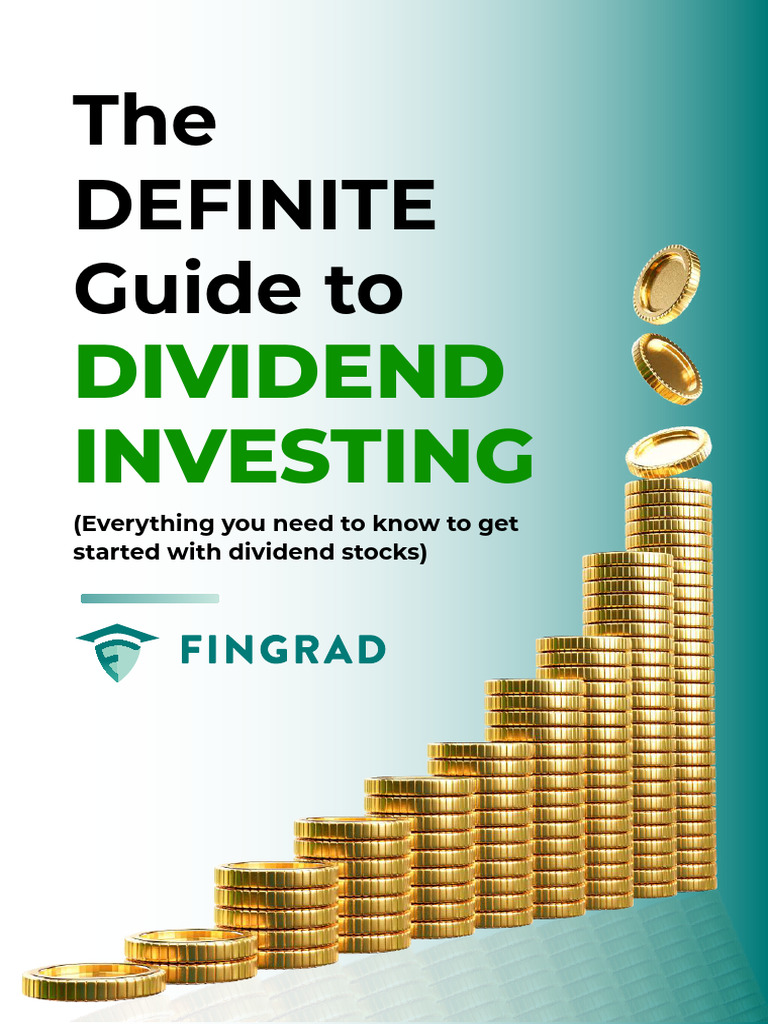A Straightforward Guide To Profitable Dividend Investing

Table of Contents
Understanding Dividend Investing Basics
What are Dividends?
Dividends represent a portion of a company's profits distributed to its shareholders. These payments are typically made quarterly, though the frequency can vary depending on the company's policy. Understanding different dividend types is crucial for profitable dividend investing. There are primarily two types:
- Regular Dividends: These are consistent, predictable payments made at regular intervals, offering a reliable income stream.
- Special Dividends: These are one-time, larger-than-usual payouts, often issued when a company has excess cash or completes a significant transaction.
Choosing Dividend-Paying Stocks
Selecting the right dividend-paying stocks is critical for successful dividend investing. Consider these factors:
- Dividend Yield: This metric represents the annual dividend payment relative to the stock's price. A higher yield indicates a potentially higher return, but it's essential to consider other factors as well.
- Payout Ratio: This shows the percentage of earnings paid out as dividends. A sustainable payout ratio (generally below 70%) suggests the company can maintain its dividend payments.
- Dividend Growth History: A consistent record of increasing dividend payments signals a financially strong and shareholder-friendly company.
- Company Financial Health: Analyze key financial metrics to assess the company's stability and ability to sustain dividend payouts.
Key Metrics to Analyze:
- P/E Ratio (Price-to-Earnings Ratio): Indicates how much investors are willing to pay for each dollar of earnings.
- Dividend Growth Rate: Shows the percentage increase in dividends over time.
- Debt-to-Equity Ratio: Measures the company's financial leverage and risk.
Resources for Finding Suitable Dividend Stocks:
- Financial news websites and publications
- Online stock screening tools
- Financial advisors
Dividend Reinvestment Plans (DRIPs)
Dividend Reinvestment Plans (DRIPs) allow shareholders to automatically reinvest their dividend payments into additional shares of the company's stock. This strategy harnesses the power of compounding, accelerating your wealth-building process. DRIPs eliminate brokerage fees and provide a seamless way to grow your holdings over time.
Building a Profitable Dividend Portfolio
Diversification Strategies
Diversification is paramount in mitigating risk. Don't put all your eggs in one basket! Diversify across:
- Sectors: Invest in companies from different industries (e.g., technology, healthcare, consumer goods) to reduce your exposure to sector-specific downturns.
- Industries: Spread your investments across various industries within sectors to further minimize risk.
- Market Capitalization: Include companies with different market capitalizations (large-cap, mid-cap, small-cap) to achieve a balanced portfolio.
Examples of Diversified Portfolios:
- A portfolio with 20% in technology, 20% in healthcare, 20% in financials, 20% in consumer staples, and 20% in real estate.
- A portfolio with a mix of large-cap, mid-cap, and small-cap stocks across multiple sectors.
Risk Management in Dividend Investing
While dividend investing offers significant potential, risks exist. These include:
- Dividend Cuts: Companies may reduce or eliminate dividends due to financial difficulties.
- Company Bankruptcy: Financial distress can lead to company failure, resulting in the loss of your investment.
- Market Volatility: Stock prices fluctuate, impacting both your dividend income and capital appreciation.
Mitigation Strategies:
- Thorough due diligence before investing in any company.
- Diversification across multiple stocks and sectors.
- Regular monitoring of your portfolio's performance.
Long-Term vs. Short-Term Strategies
For profitable dividend investing, a long-term perspective is crucial. While short-term trading might offer quick profits, it also carries greater risk. A buy-and-hold strategy allows you to benefit from consistent dividend payments and long-term capital appreciation.
Maximizing Your Dividend Income
Tax Implications of Dividend Income
Dividends are generally taxed as ordinary income, but the specific tax rates depend on your income bracket and applicable tax laws. Consult with a tax professional to understand and optimize your tax strategy related to dividend income.
Tracking Your Portfolio Performance
Regularly monitor your portfolio's performance to ensure it aligns with your goals. Track:
- Dividend payments received
- Capital appreciation or depreciation of your investments
- Overall portfolio returns
Use portfolio tracking software or spreadsheets to efficiently monitor your investments.
Continuously Reviewing and Adjusting Your Portfolio
Periodically review your portfolio to rebalance your holdings, sell underperforming assets, and adjust your strategy based on market conditions and your evolving financial goals. This proactive approach is essential for long-term success in dividend investing.
Conclusion
Profitable dividend investing requires a well-defined strategy that combines understanding the basics, building a diversified portfolio, managing risks, and maximizing income through consistent monitoring and adjustments. By following the principles outlined in this guide, you can build a robust and profitable dividend portfolio that provides a steady stream of passive income and contributes significantly to your long-term financial success. Begin your journey towards profitable dividend investing by researching suitable stocks and creating a diversified portfolio. Start building your passive income stream today!

Featured Posts
-
 Ru Pauls Drag Race S17 E13 Preview A Family Affair Featuring Drag Baby Mamas
May 11, 2025
Ru Pauls Drag Race S17 E13 Preview A Family Affair Featuring Drag Baby Mamas
May 11, 2025 -
 John Wick 5 A Thrilling Development But Whens The Release
May 11, 2025
John Wick 5 A Thrilling Development But Whens The Release
May 11, 2025 -
 Draw Against Mainz Offers Lifeline For Relegation Threatened Holstein Kiel
May 11, 2025
Draw Against Mainz Offers Lifeline For Relegation Threatened Holstein Kiel
May 11, 2025 -
 Benny Blanco And Selena Gomez Wedding Dance Plans Revealed
May 11, 2025
Benny Blanco And Selena Gomez Wedding Dance Plans Revealed
May 11, 2025 -
 Colton Hertas Barber Motorsports Park Challenge Finding Pace When It Matters
May 11, 2025
Colton Hertas Barber Motorsports Park Challenge Finding Pace When It Matters
May 11, 2025
